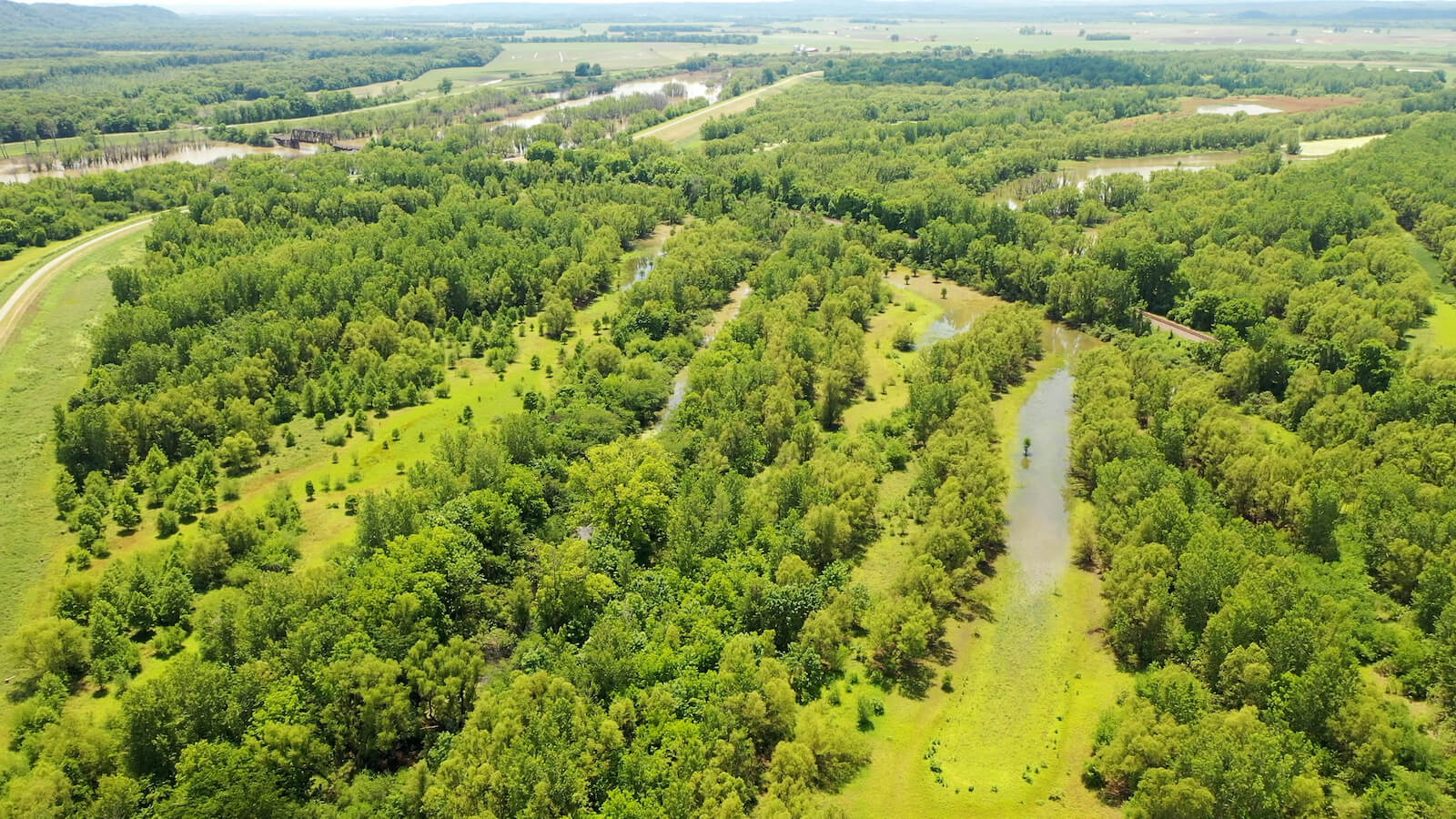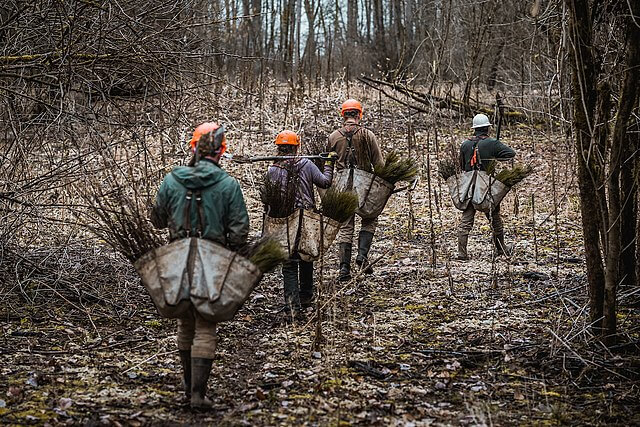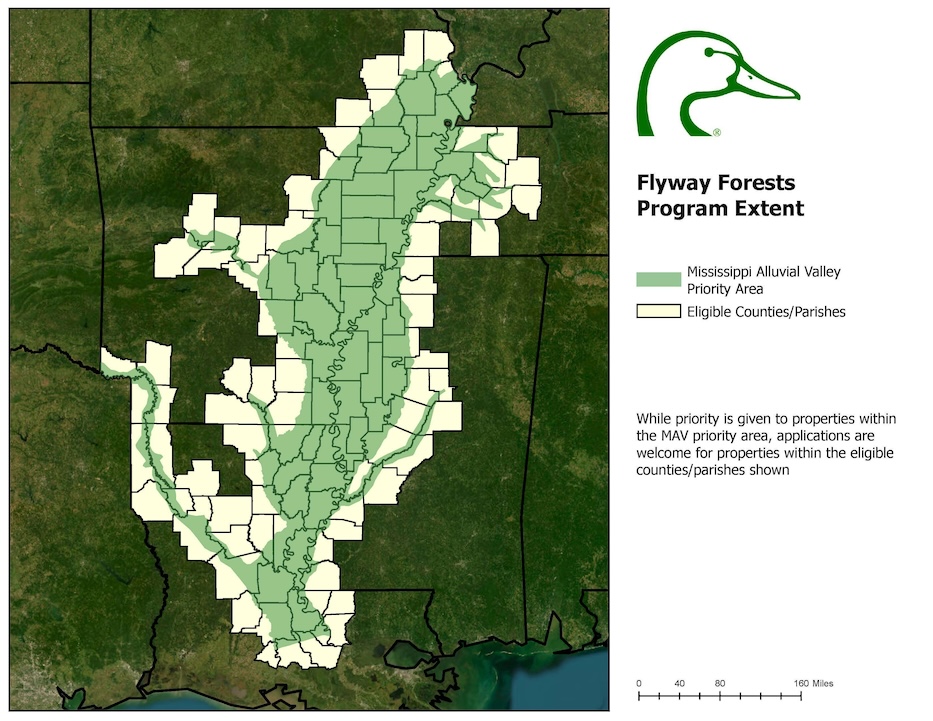Ducks Unlimited (DU) has long understood the importance of land stewardship partnerships with agricultural landowners. DU’s Flyway Forests program is designed to help landowners restore bottomland hardwood forests on private lands in the lower Mississippi River valley, tributaries, and adjacent counties by creating forests to help capture significant amounts of carbon and bring wildlife back to their properties. By enrolling, you can contribute to improving air quality, preserving soil health, and providing essential habitat for wildlife while earning financial incentives and ensuring the protection of your land for future generations.
What You Need to Know
1. DU’s Flyway Forests program is designed to restore bottomland hardwood forests on private lands in the lower Mississippi River valley, tributaries, and adjacent counties by planting trees—helping to capture significant amounts of carbon and support wildlife.
2. DU’s expert working lands biologists work with landowners to select the location(s) and native hardwood tree species for forests to best complement the land’s existing use and landowner goals—managing all of the labor and supplies needed in the process.
3. DU is partnering with landowners and Land and Water Corp., a family-owned and operated land, equipment, and services company based in Colorado, to implement this program.

Forests play a critical role in mitigating climate impacts by capturing carbon dioxide and storing carbon with soils and forest biomass. Approximately 50% of the carbon stored in a forest is in the soil, and the rest is stored in the trunk, branches, and roots.
The DU team works with you every step of the way. We will map out the best area(s) for restoration and help you plan for building envelopes, food plots, and other management zones.

Photo by Ben Hemmings
The carbon credits generated by the program as the planted trees store carbon will be traded via the Voluntary Carbon Market, a global voluntary marketplace for these credits, which represent reductions or removals of carbon dioxide or other greenhouse gases from the atmosphere. Project developers register projects with carbon registries, which establish project protocols, track the ownership of credits, and accredit third party verification bodies, who serve a purpose similar to that of an auditor, ensuring that the project developer has adhered correctly to the protocols and that the reductions or removals claimed by the developer have indeed taken place. After this verification process, credits are then issued by the registry and sent to market for sale. Buyers then purchase issued credits to support the continuation of projects and to meet their own objectives.

Join the Ducks Unlimited Flyway Forest Reforestation Program today to help restore critical habitats and capture significant amounts of carbon. By enrolling, you will contribute to improving air quality, preserving soil health, and providing essential ecosystems for wildlife while earning financial incentives and ensuring the protection of your land for future generations.
Complete the interest form now to be contacted about enrollment details beginning in October and ending in February. Opportunities are limited, and minimal information is required to get started.


We don’t have any minimum required ownership length, but we do require that the property is owned in fee title at the time the application is submitted. Enrollment is not guaranteed until the Flyway Forests purchase agreement is signed and the 90-day due diligence period has passed.
Yes, although the restrictions in the conservation easement and term agreement are recorded with the title to the property and transfer to the next landowner; the payments also transfer to the next landowner (run with the land).
Timber harvest will be restricted during the 40-year crediting period. Carbon registries do not allow intentional water management inside the boundaries of a reforestation carbon project due to methane emissions. However, we will work with you to create a site plan that meets your needs. This might look like setting aside an area for moist soil management outside the carbon project boundaries.
We value creating a positive working relationship with landowners and the next generation who will manage the property. We are not able to change any of the terms in the agreement for the next landowners, but we will continue to oversee forest monitoring and be available to discuss any questions or concerns over the lifetime of the project.
Ducks Unlimited uses cookies to enhance your browsing experience, optimize site functionality, analyze traffic, and deliver personalized advertising through third parties. By continuing to use this site, you agree to our use of cookies. View Privacy Policy